Average 3 Mile Run Time By Age And Gender: A 6-Week Trainig Plan
Author:
Unlock your full potential by engaging with our experts and community! Have questions about your fitness journey or looking for expert advice on weightlifting techniques? Don’t hesitate — leave a comment below and Oleksandr Zagrebelnyi will provide a personalized answer and insights to help you reach your goals.
Torokhtiy is reader-supported. Some links are affiliate links, and we may earn a commission at no extra cost to you. See our disclosure page for details.
Many runners prefer to train for the 3-mile run, which is an excellent distance to work towards. However, many people struggle to determine their average 3-mile time.
A good time requires a balance of speed, endurance, and strength, which can be challenging for many runners. But the accomplishment you get from crossing the finish line is worth it. So how do you run this distance in a better time?
In this blog post, we explore the average running time and discuss some factors that can affect it. Want to know how far is 3 miles in minutes? Let’s dive in!
How Long Does It Take To Run 3 Miles? — The first thing you need to do is to find the rear roller bolts (at the back of your treadmill). You’ll need an Allen wrench to tighten or loosen them. After you’re done, make sure to test it before you actually use it.
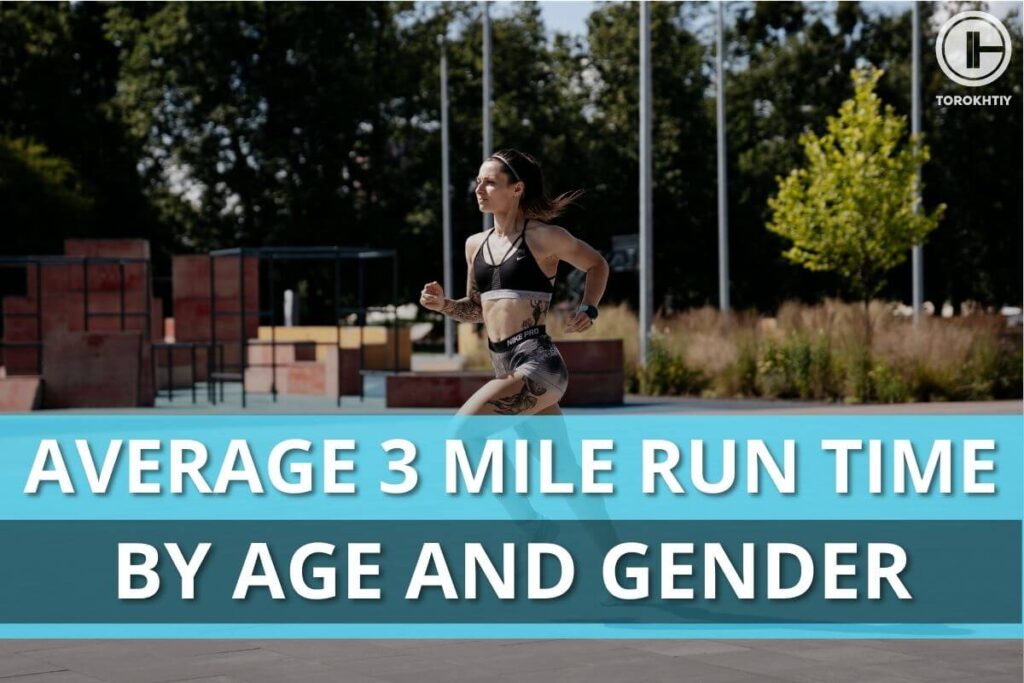
How Far Is 3 Miles?
Three miles is equivalent to approximately 4.83 kilometers. In other words, if you were to run 3 miles, you would have covered almost 5 kilometers. This distance can be a great challenge for beginners, but with proper training, it can be a manageable distance for most people.
The number of running steps to complete 3 miles can vary depending on your stride length. On average, it takes about 4,500 to 5,500 steps. If you have a short stride, you may need to take more steps to cover the distance, while those with a long stride may require fewer steps.
The difficulty of running 3 miles depends on your fitness level and experience as a runner. For some, this distance may be an easy warm-up, while it can be a challenging workout for others.
If you are just starting, it may be best to gradually work up to this distance by incorporating walk breaks or reducing the overall distance and gradually building up over time.
Many people wonder how many minutes is 3 miles? The time can vary greatly depending on your fitness level and pace. An experienced runner may be able to complete this distance in 20-25 minutes, while a beginner may take closer to 30-35 minutes.
It’s important to focus on your own pace and not compare yourself to others, as everyone’s fitness level and running ability is different.
Running Time Calculator For A 3-Mile Run
The completing 3 miles based on your individual fitness, levels and pace. This calculator will play a crucial role in determining the approximate your time for a 3-mile run.
Running Time Calculator
Result:
5 Benefits Of Running 3 Miles A Day
Let’s discuss five of the benefits of running 3 miles per day, which is a great distance for both beginners and seasoned runners.
✅ Improves Physical Health
Running 3 miles a day can significantly improve your physical health. It helps strengthen your heart, lungs, and muscles, reducing the risk of chronic conditions such as heart disease, diabetes, and stroke.
Running also helps improve bone density, reducing the risk of osteoporosis. Additionally, running can help you lose weight and maintain a healthy body mass index (BMI), improving your overall health.
✅ Reduces Stress And Anxiety
Running is not only great for physical health, but also for mental health. It releases endorphins, which are natural painkillers that can reduce stress and anxiety. It can also help improve your mood and boost your self-esteem. Running outdoors can be especially therapeutic, as it allows you to connect with nature and breathe fresh air.
✅ Improves Sleep
Running can also help improve your sleep quality. Studies have shown that regular exercise can help regulate your circadian rhythm, improving your sleep quality. Running also helps reduce stress and anxiety, making it easier to fall asleep at night. However, it is important to note that you should avoid running too close to bedtime, as this can make it difficult to fall asleep due to increased energy levels.
✅ Boosts Brain Function
Running can help improve brain function and cognitive abilities. It increases blood flow to the brain, improving memory and concentration. Running can also stimulate the growth of new brain cells, which can improve overall brain health. Additionally, running can help reduce the risk of cognitive decline and dementia in older adults.
✅ Increases Longevity
Running 3 miles a day can help increase your longevity. Studies have shown that regular exercise can increase life expectancy by reducing the risk of chronic diseases and improving overall health. Running can also help reduce the risk of premature death from all causes.
Average Time To Run 3 Miles
Before we dive into the average time it takes to run 3 miles, it’s important to understand pace. Pace is the amount of time it takes to run a mile. It’s usually measured in minutes and seconds per mile. For example, if you run 1 mile in 9 minutes and 30 seconds, your pace is 9:30 per mile. Your pace will determine how long it takes you to run this distance.
Running time varies based on age, gender, and fitness level. Generally, a good 3-mile time for men is under 24 minutes and for women is under 27 minutes.
However, if you’re a beginner runner or have been inactive for a while, your goal might be to simply finish the distance, regardless of the time it takes.
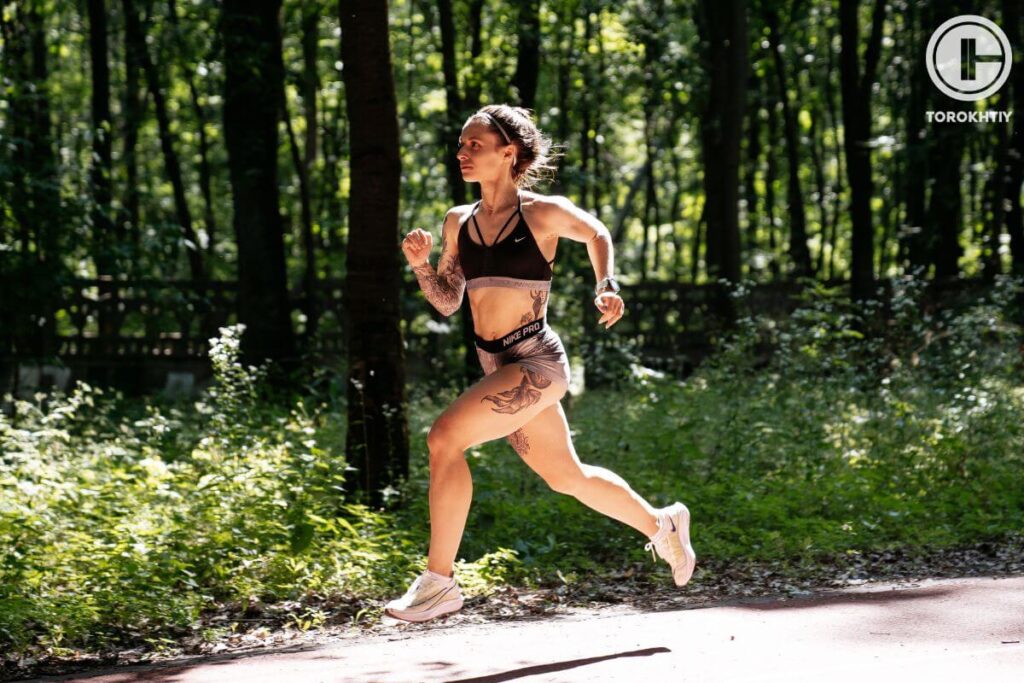
1. Average 3-Mile Run Time By Age And Gender
The table below shows the average 3-mile running time based on age and gender for experienced runners. Use this chart to answer questions like “How fast should a 60-year-old run 3 miles?”
| Age Group | Men | Women |
|---|---|---|
| 20-29 | 20:30 | 23:30 |
| 30-39 | 22:00 | 25:30 |
| 40-49 | 23:00 | 27:00 |
| 50-59 | 24:30 | 30:00 |
| 60-69 | 28:00 | 35:00 |
| 79+ | 35:00 | 45:00 |
2. Average Time To Run 3 Miles Based On Experience Level
The table below shows how far is 3 miles in minutes based on experience level:
| Experience Level | Average Time to Run 3 Miles |
|---|---|
| Beginner | 30-45 minutes |
| Intermediate | 24-30 minutes |
| Advanced | 18-24 minutes |
5 Factors Affecting The Amount Of Time Neccessary For A 3-Mile Run
The time it takes for you to run 3 miles can vary greatly, depending on several factors. Let’s explore five key factors that can affect it.
1. Experience
Your experience level can be a significant factor in how long it takes you to run the distance. Beginners often take longer to complete the distance, while intermediate runners will typically have a better time. Professional athletes can run in a significantly shorter time than the average person.
2. Age
Age is another factor that can affect your running time. Generally, younger people tend to be faster runners than older people. This is because our muscle mass decreases and our cardiovascular system becomes less efficient as we age. However, it’s important to note that many older runners are still very fast and can run 3 miles in a short amount of time.

3. Gender
Gender can also affect how long it takes you to run 3 miles. Men tend to be faster runners than women, mostly because they tend to have more muscle mass and larger lung capacity. However, many women are very fast runners and can complete the distance in a short amount of time.
4. Physical Fitness
Your overall physical fitness is a significant factor affecting your running time. The fitter you are, the faster you can run. This is because your muscles are stronger and your cardiovascular system is more efficient, allowing you to run longer without getting tired.

5. Terrain And Weather
The terrain and weather can also significantly affect how long it takes you to run 3 miles. Running on flat, even terrain is generally easier and faster than running on hilly or uneven terrain. Similarly, running in ideal weather conditions, such as cooler temperatures and low humidity, can help you run faster.
The following table summarizes the various factors that can affect your running time:
| Factor | Effect on Running Time |
|---|---|
| Experience | Faster with more experience |
| Age | Slower with increasing age |
| Gender | Generally faster for males |
| Physical Fitness | Faster with higher fitness levels |
| Weather | Slower in adverse weather conditions (e.g. rain, extreme heat or cold) |
| Terrain | Slower on hilly or rough terrain |
How To Prepare For A 3-Mile Run: 6-Week Training Plan + 3 Helpful Tips
Running may seem like a daunting task, especially if you are new to it. However, with proper training and preparation, anyone can run this distance. Let’s discuss some tips to help you prepare for a 3-mile run.
A 6-Week Training Plan
Before we jump into tips, it’s important to have a training plan. Here is a simple, 6-week training plan to help you prepare for your 3-mile run:
| Week | Workout 1 | Workout 2 | Workout 3 |
|---|---|---|---|
| 1 | 1.5 miles | 1 miles | 1.5 miles |
| 2 | 2 miles | 1.5 miles | 2 miles |
| 3 | 2.5 miles | 2 miles | 2.5 miles |
| 4 | 3 miles | 2.5 miles | 3 miles |
| 5 | 2 miles | 1.5 miles | 2 miles |
| 6 | 3 miles | 2 miles | 3 miles |
Tip 1: Gradual Progression
One of the most important tips for preparing is gradually progressing your training. This means increasing your mileage slowly over time. If you try to do too much too soon, you put yourself at risk for injury. Stick to your training plan and increase your mileage by no more than 10% each week.
Tip 2: Proper Gear
Having the proper gear is also important. Invest in good running shoes that fit properly and provide adequate support. In addition, wear moisture-wicking clothing to keep you cool and dry during your runs.
Nike Men’s Revolution 5 Running Shoe
The Nike Revolution 5 blends comfort and versatility—ideal for daily runs with a cushioned fit and durable design. This is the ideal choice for everyday run, provide versatile performance and all-day comfort.

Tip 3: Cross-Training
Cross-training, or incorporating other forms of exercise into your routine, can also help prepare you for a 3-mile run. Strength training exercises can help improve your overall fitness and prevent injury. Yoga and stretching can improve your flexibility and prevent muscle soreness.
Hoka Bondi 8
- Material: Breathable and supportive mesh upper
- Sole Material: Full-length EVA midsole for maximum cushioning
- Outsole (tread feature): Durable rubber outsole with a unique lug pattern
- Drop: 4mm
- Season: Suitable for all seasons
- Special Features: Exceptional cushioning and comfort
- Size: Available in various sizes
- Type: Maximum cushioning running shoe
If you want excellent running or walking shoes or just footwear you’ll be comfortable in, you can’t go wrong with the Hoka Bondi 8.
It’s been upgraded and now they have lighter, softer materials and a new extended heel design. The heel design gives a super soft, balanced feeling from th emoment your heel hits the ground to when you push off with your toes.
As far as the weight goes, it’s around 10.80 ounces, and the heel drop is 4 mm. They’re not too heavy and the lower drop is a good balance between cushioning and feeling connected to the ground.
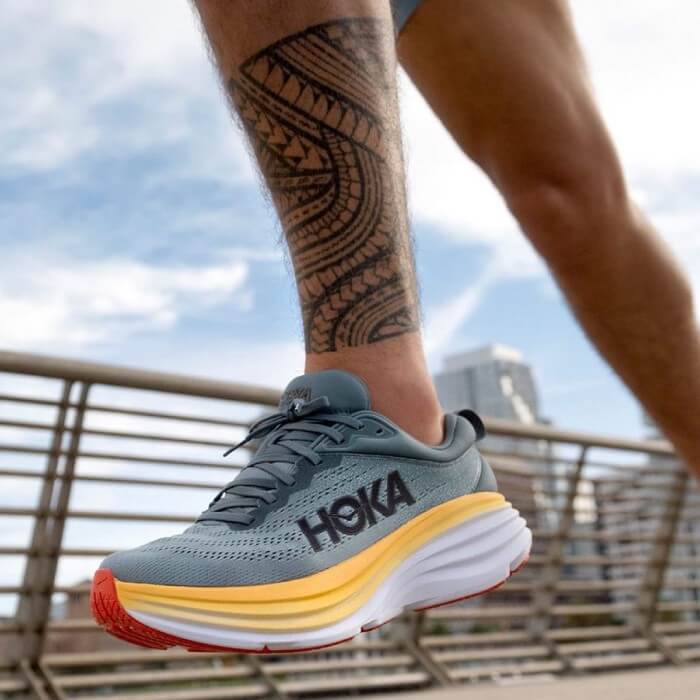
The Bondi 8 is focused on cushioning and keeps things simple. There’s a good amount of support without any extra stuff that you don’t really need and that would only jack up the price. Take the rear crash pad, for example – it makes for a soft, smooth ride, which is perfect if you like to run outdoors.
The upper part is made of engineered mesh, which is breathable and keeps your feet cool and dry. The tongue and collar have memory foam and mold to your foot shape. All of these features make the fit snug but flexible, which is exactly what you would want.
The Bondi 8 is eco-friendly because it uses recyclable materials in parts like the mesh and the sockliner. Plus, the shoes are completely vegan, which (if that’s important to you) is nice!
FAQ
How Long Does It Take The Average Man To Run 3 Miles?
The average time for a man is around 30 minutes. However, this can vary depending on various factors, such as age, fitness level, and running experience. Nevertheless, consistent training and perseverance can help improve your running time.
Is Running 3 Miles In 30 Minutes Good?
Running 3 miles in 30 minutes is a great accomplishment! It shows you have good cardiovascular endurance and can sustain a moderate to intense pace for a decent amount of time. However, what is considered “good” varies depending on age, fitness level, and personal goals.
How Many Calories Do You Burn Running 3 Miles?
By running 3 miles, you can burn 300- 400 calories, which is a great way to shed excess weight. The exact amount of calories you burn depends on factors like your speed, weight, and terrain.
Conclusion
The average 3-mile time can vary greatly, depending on several factors, including age, gender, fitness level, terrain, and weather conditions. If you want to improve your 3-mile run time, incorporate regular speed workouts, improve your running form, and fuel your body properly.
Everyone’s fitness journey is different, so don’t worry too much about how you compare to others. Focus on setting personal goals and working towards them at your own pace. Happy running!
What is your 3-mile run time? Please share your experience in the comments below.
Also read:
- How to Keep Shorts From Riding Up
- Why Is My Heart Rate High on Easy Runs
- Is Running 3 Miles a Day Good
References:
- Walking vs running for hypertension, cholesterol, & diabetes risk reduction // PMC: https://www.ncbi.nlm.nih.gov/pmc/articles/PMC4067492/
- Benefit of human moderate running boosting mood and executive function coinciding with bilateral prefrontal activation // PubMed: https://pubmed.ncbi.nlm.nih.gov/34811374/
- Health benefits of physical activity: the evidence // PMC: https://www.ncbi.nlm.nih.gov/pmc/articles/PMC1402378/
- Running as a Key Lifestyle Medicine for Longevity // PubMed: https://pubmed.ncbi.nlm.nih.gov/28365296/
- Running behaviors, motivations, and injury risk during the COVID-19 pandemic: A survey of 1147 runners // PMC: https://www.ncbi.nlm.nih.gov/pmc/articles/PMC7880469/
- Photo by Woman in Gray Hoodie Sweater, Pixabay, photos by Torokhtiy Media Team
Why Trust Us?
With over 20 years in Olympic weightlifting, strength training, nutrition coaching, and general fitness our team does its best to provide the audience with ultimate support and meet the needs and requirements of advanced athletes and professional lifters, as well as people who strive to open new opportunities and develop their physical capabilities with us.
By trusting the recommendations of our certified experts in coaching, nutrition, and sports training programming, as well as scientific consultants, and physiotherapists, we provide you with thorough, well-considered, and scientifically proven content. All the information given in the articles concerning workout programming, separate exercises, and athletic performance, in general, is based on verified data.
The product testing process is described in more detail here.
Oleksandr is a running coach and member of the Nike Run Club coaching team for 8 years. A participant in national and international competitions at distances from one kilometer to the ultra trail. Owner of mountain trail running camps. Nowadays Oleksandr is responsible for creating running training programs for athletes of various levels, coaching personally offline and online, conducts trail running camps in the mountains, participates in competitions.



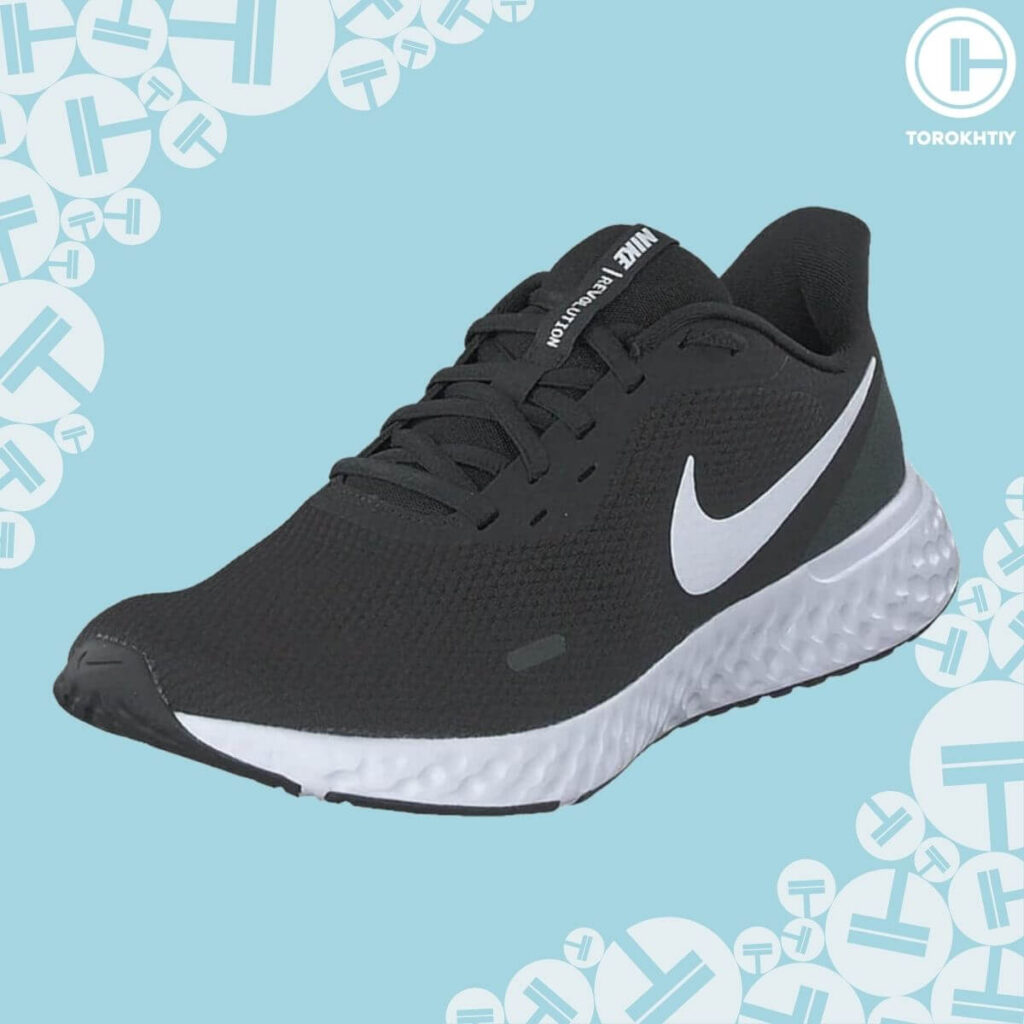
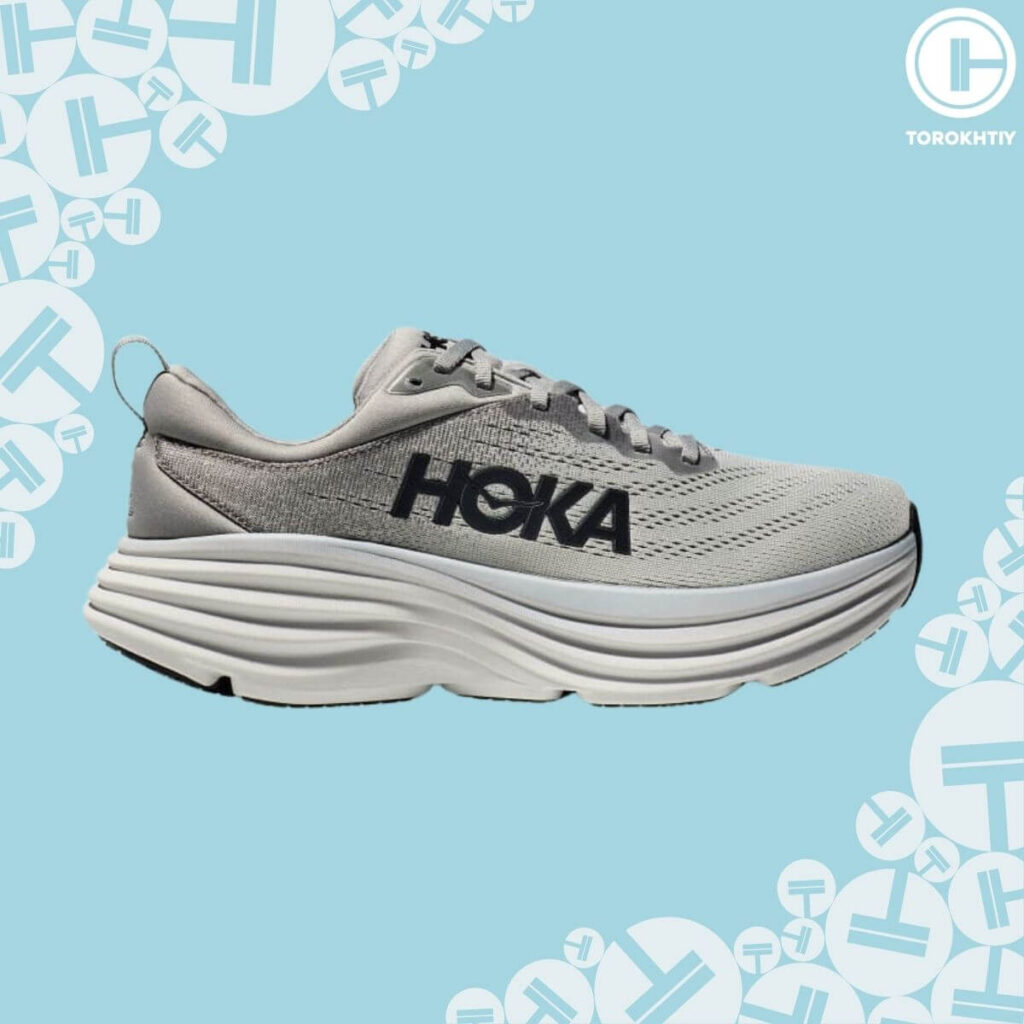
Still have questions after reading our article? Unlock your full potential by engaging with our experts and community! Don’t hesitate — leave a comment below and Oleksandr Zagrebelnyi will provide a personalized answer and insights to help you reach your goals.